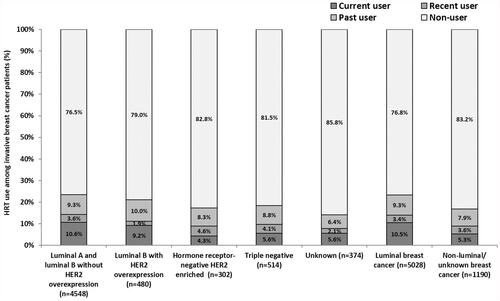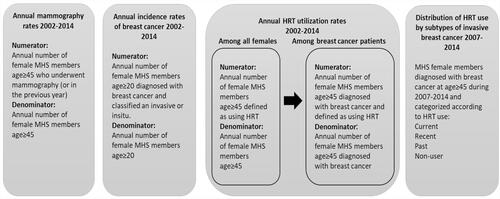Figures & data
Figure 2 Breast cancer incidence 2002–2014. (A) Age-adjusted annual incidence rate of breast cancer by type and overall. (B) Age-specific annual incidence rates of breast cancer overall (invasive and in situ).
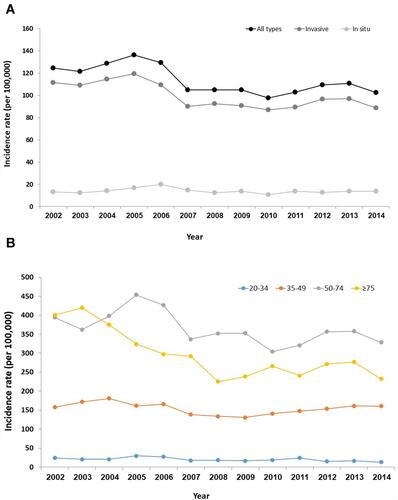
Figure 3 Annual proportions of HRT use 2002–2014 among all female MHS members (age ≥ 45 years) by period of use (current users, HRT use in the calendar year/year prior to breast cancer diagnosis; recent users, HRT use in any of the years 2–5 before each calendar year/year of breast cancer diagnosis).
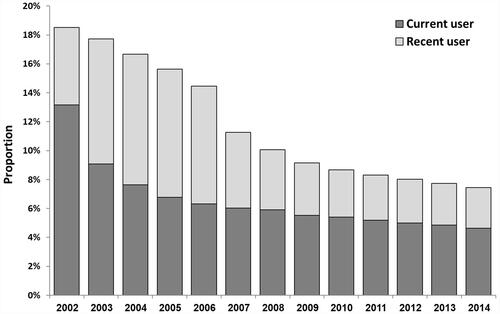
Figure 4 Annual proportions of current use of HRT according to breast cancer status (age ≥ 45 years). Differences in HRT use between breast cancer free women and those diagnosed with any breast cancer were statistically significant (p < 0.05) in 2003 and 2007–2014.
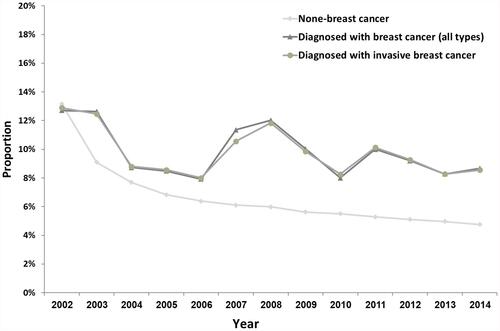
Figure 5 Invasive breast cancer classification and HRT use during 2007–2014 among MHS female members age≥45 years on diagnosis (n =6218). The analysis includes current users (within 1 year prior to the breast cancer diagnosis), recent users (within 2–5 years), past users (>5 years), and non-users.
